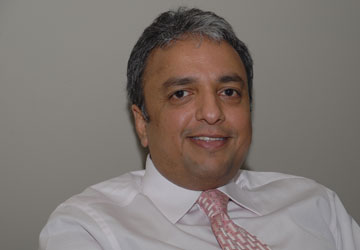 Amritha Pillay (ML): Do you think that this is an ideal time to invest in free trade warehousing zones (FTWZs) in
Amritha Pillay (ML): Do you think that this is an ideal time to invest in free trade warehousing zones (FTWZs) in
Ajay S Mittal (ASM): Although it is a bit late, I think this is the most appropriate time for FTWZs in
So the basic idea behind setting up our own FTWZs in
In a way, our FTWZs would become duty-free import and export hubs that can boost the business of domestic companies.
ML: Out of your three FTWZs at Mumbai, New Delhi and Nagpur, two are located far away from ports. Don’t you think that FTWZs near ports would be more suitable for the kind of business you are planning?
ASM: The FTWZ hub, as a concept, is more profitable when located near a port. However, when you are setting up FTWZs in a large country like
ML: What is the role Arshiya would play in this entire process of import and export?
ASM: Using our freight forwarding arm, we will import products into our FTWZs. Companies can take them out from the FTWZ for sale after paying necessary duty and other charges. If they have to distribute the product across the country, we can help on that front as well. And if the companies want to re-export the product to some other country, that can also be done at the FTWZs.
ML: Do you think that such FTWZs can boost the import-export trade in
ASM: FTWZs do have a huge potential to boost the import-export trade in
ML: What kind of labour opportunities would be there in these zones?
ASM: The employment opportunities depend on activities of the customer, whether they are labour intensive or not. However, as per our estimates, each FTWZ should be able to provide job opportunities for around 15,000 to 30,000 people, directly or indirectly.
ML: How has been the progress of your three FTWZs in terms of bookings and operations?
ASM: We are building all the three FTWZS in a phased manner. The Mumbai FTWZ will be operational by March-April this year. Almost all the space available in the Mumbai FTWZ has been booked. However, for the
ML: What is your revenue-earning model for these FTWZs? What would be the share of rental revenues and allied services revenues?
ASM: Even though we would be renting out the space in the FTWZs, we are not looking at it (rental revenues) as the only source. For every rupee we earn from rent, there is a possibility to earn two, three or four rupees from other services like rail transport, freight forwarding, supply-chain distribution, warehouse management and information technology visibility. For Arshiya, the opportunity is not in the zone, but we see more opportunities from the varied service activities.
ML: What about the competition in the FTWZ business?
ASM: At present, I don’t know of any other company which can or is providing the services which we would be offering at one place. There are some multinational companies in the business, but they are investing more in land purchase than developing FTWZs. The smaller domestic companies are not offering any kind of integrated services. So, even though Arshiya is the first to enter this business, we don’t think it would be the sole player. The first mover or player advantage would always be with Arshiya, at least for some time.
ML: Land acquisition has created many problems in
ASM: We as a company did not take help from any government (
ML: Besides these three FTWZs, Arshiya is also setting up two additional FTWZs. Could you elaborate on your plans?
ASM: We will start looking for land for the other two FTWZs from December 2010. By that time, all our three zones at Mumbai,